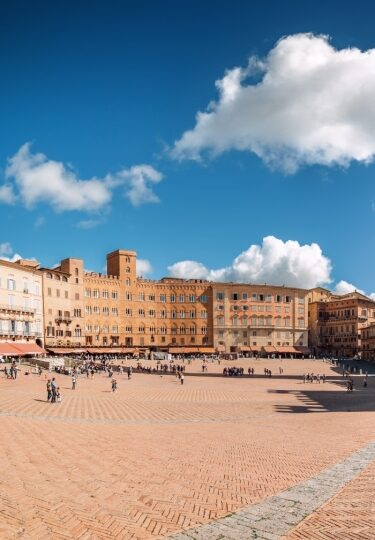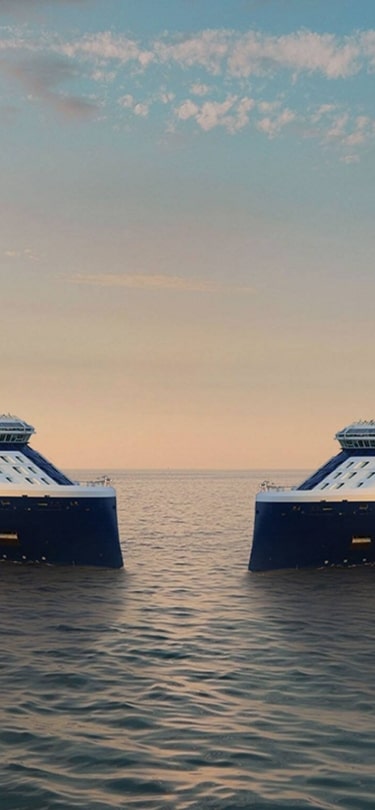Centrally located in the northern half of Tuscany, the medieval city of Siena is a vision of terracotta and brick elevated on a hill above a softly contoured rural landscape. Periscoping from its heart is the Torre del Mangia, indicating the location of the famed Piazza del Campo in the city’s UNESCO-listed historic center.
Throughout its history, this doughty Tuscan city has drawn inevitable comparisons to its near neighbor, Florence, in the north. And while comparisons between these two once-powerful city-states can certainly be drawn – both are gorgeous, for example – the much smaller Siena is, in reality, a totally different prospect both in look and feel.
Perhaps indicative of its historically pugnacious character is that its walls, standing since the 12th century, continue to encircle the city’s exquisite medieval heart. And while the Sienese have been fiercely independent throughout their history, they’re also extremely welcoming to those keen to admire their city and its many treasures.
Why Visit Siena?
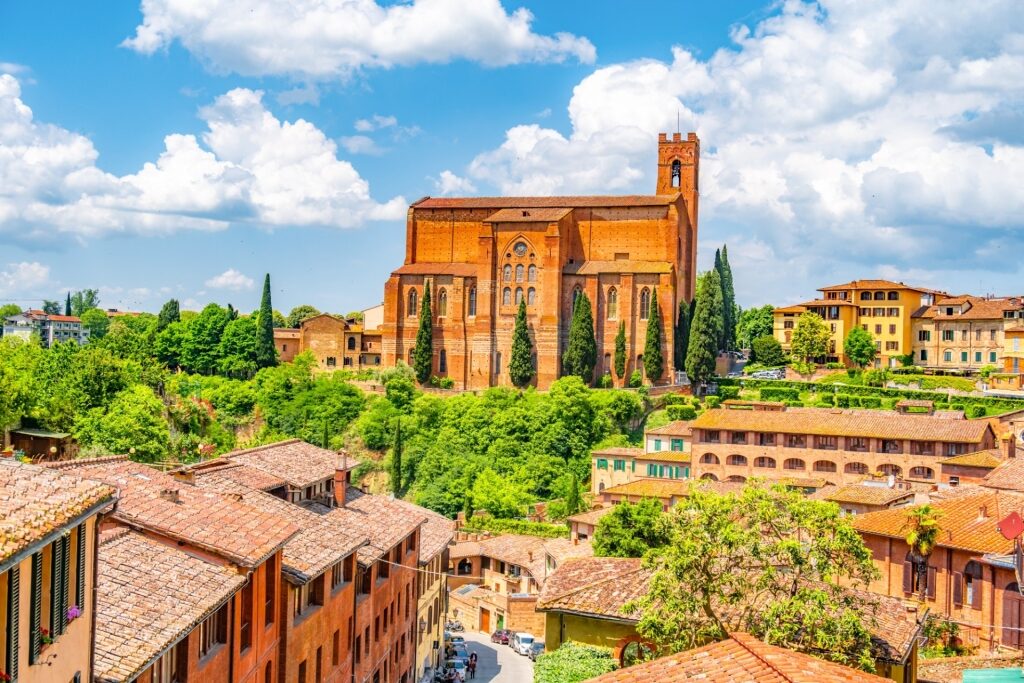
Siena
If you’re visiting Tuscany, Siena is a must-see. It’s a coil of streets that tightly cap the hill on which the city is built, the urban plan projecting the vibrancy you can feel while strolling the cobbles of this proud, traditional city.
Siena has a rich history, including a fascinating period of oligarchic rule. The city’s significance in the Middle Ages is expressed through some of Italy’s most memorable sacred sights: the dazzling duomo, the Piccolomini Library, and the relics of St. Catherine.
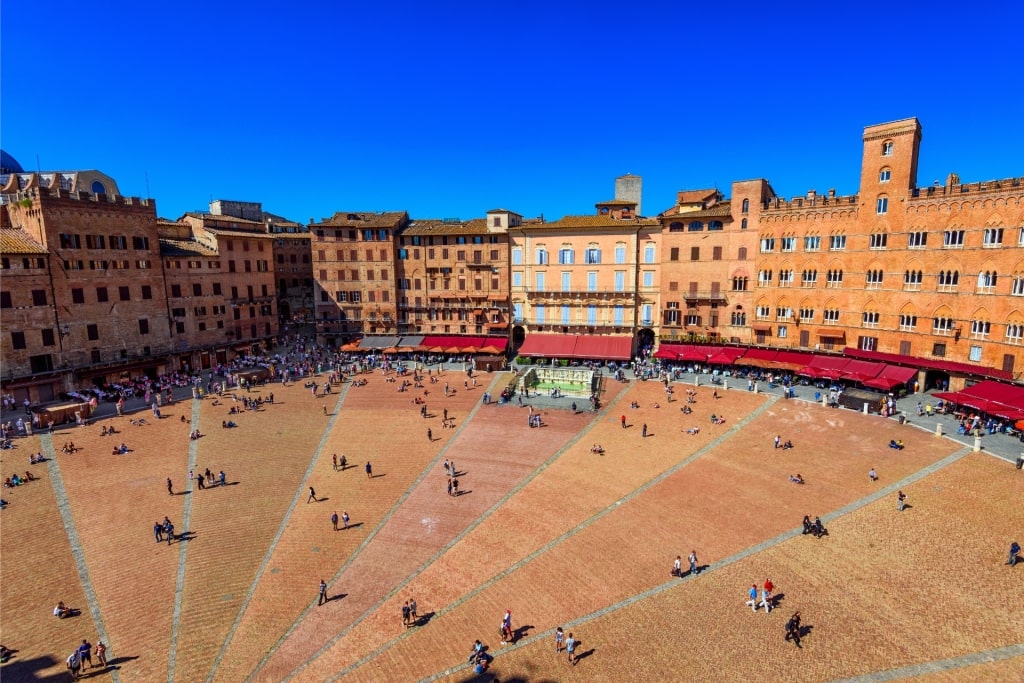
Piazza del Campo
As you burrow into Siena’s streets, life in this beautiful Italian city feels very near. Alleys fill with the smell of garlic and tomato at lunchtime, Vespas cruise by, possibly driven by children, and the grand Il Campo piazza feels laid-back and welcoming.
This slanted oval “square” is the home of the Palio—the breathless horse race that has clattered across its herringbone brick for centuries. Those icons you’ll admire bordering the hand-painted ceramic plates for sale indicate Siena’s various districts, or contrade.
Allegiances to these icons still run deep and during Palio time that citywide tension finds its outlet. Authenticity is apparent everywhere and its presence is intoxicating.
History & Culture
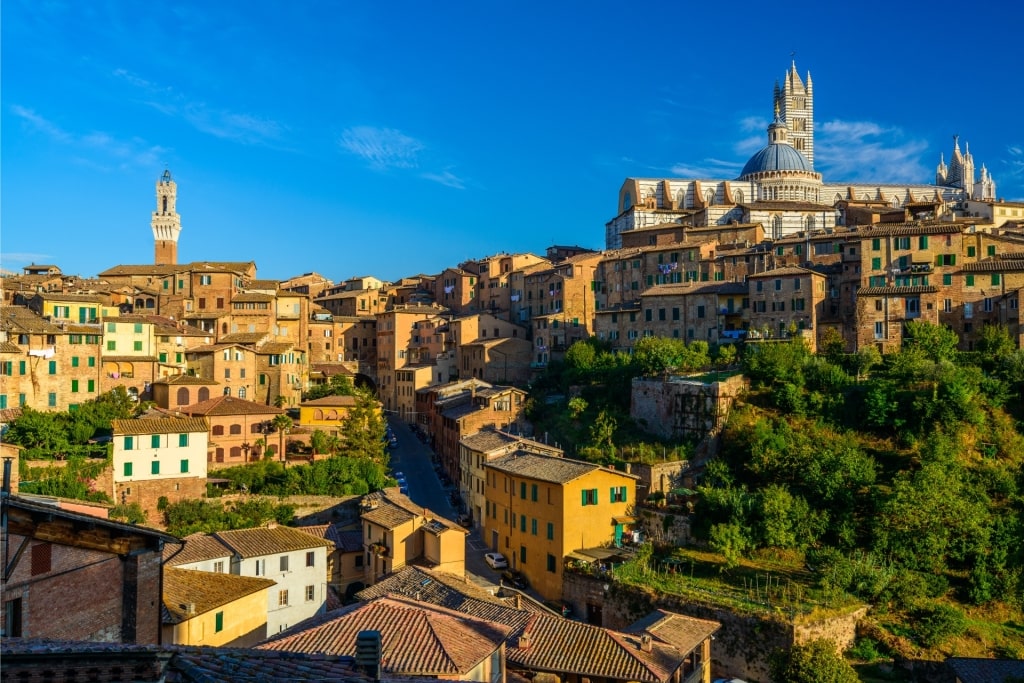
Siena
While the founding of Siena reaches back to the age of the Etruscans, it’s with classical Rome that the city’s founding myth is most entwined. The black and white horses on the Sienese coat of arms are symbolic of Senius and Aschius. Following the death of their father, these sons of Remus fled the Roman capital and founded ancient Siena.
It’s telling that one of the earliest historical documents in existence that relates to the Sienese details an act of civil disobedience against the Romans. The citizens of Siena endured a period of Roman control before becoming subjects of the Lombards. Finally, in the 12th century, Siena became a self-determining republic.
The city flourished, entering its “golden age”, the Republic’s sphere of influence extending to the Tyrrhenian coast. Siena, with a plum situation on numerous trade routes, grew rich through money lending and the wool trade.

Siena
At this time, the city, notoriously riven with competing factions, entered a period of stable government under the oligarchic Council of Nine.
Entangled in the medieval Guelph and Ghibelline conflict, Siena clashed numerous times with pro-papacy Florence. This great rivalry would contribute to the weakening of Siena’s influence and ultimately the end of the republic.
Despite this, Siena continued to play a significant part in Italian history as well as the Renaissance—a cultural legacy visible in the Palazzo Pubblico as well as the city’s stunning Piccolomini Library.
Siena is one of those Italian cities where its history feels truly tangible. Its robust adherence to its traditions and the renown of its 17 competitive contrade only helps to reinforce this fascinating city’s rich cultural weave.
Tips for Visiting Siena
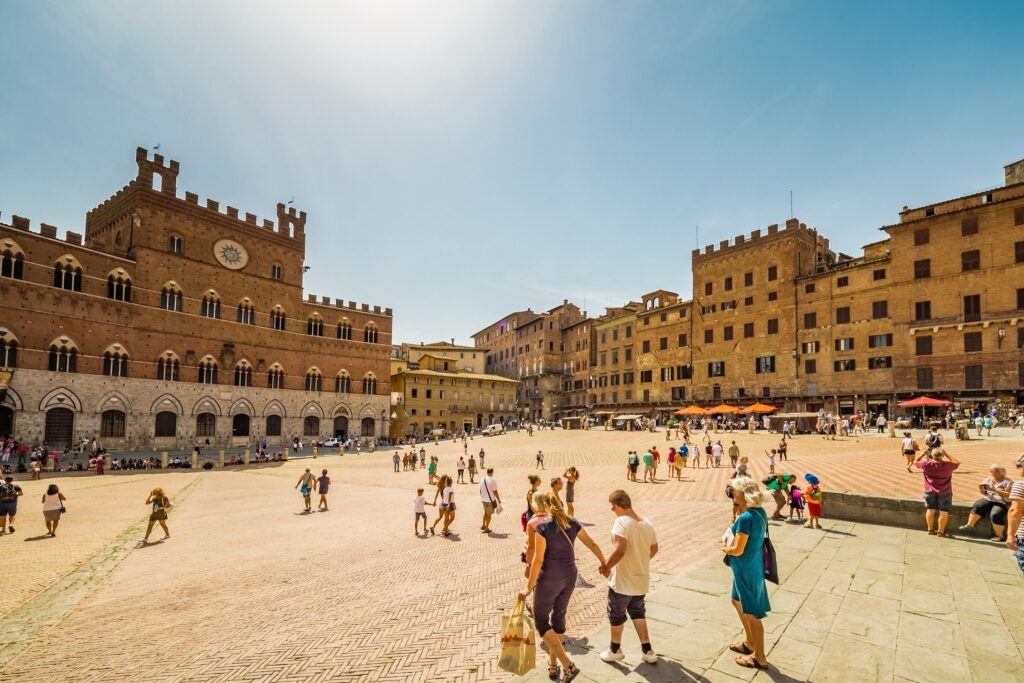
Piazza del Campo
Strap on your comfortable hiking shoes—Siena’s historic heart is wonderfully walkable, although expect a workout for your glutes.
The best time to discover its charms is outside of the high season, when its atmospheric lanes and compact piazzi struggle with the influx of visitors. However, it’s during this time that Siena’s iconic horse race, the Palio, takes place, drawing big crowds.

Piazza del Campo
There are two races—the Palio di Provenzano and the Palio dell’Assunta, held on July 2 and August 16 respectively. If you’re planning to try to see the race, you’ll need to arrive early on the day to secure a good spot in the Piazza del Campo.
If you’re concerned that you might have to limit your limoncello consumption the previous night to get up early, have no fear—it is also possible to purchase seats in the stands in advance.
Another consideration pertains to the Duomo. It has a mesmerizingly beautiful marble floor that is partially covered for much of the year. To see it in all of its glory, time your visit for either July or September.
Things to Do & Attractions in Siena
Piazza del Campo
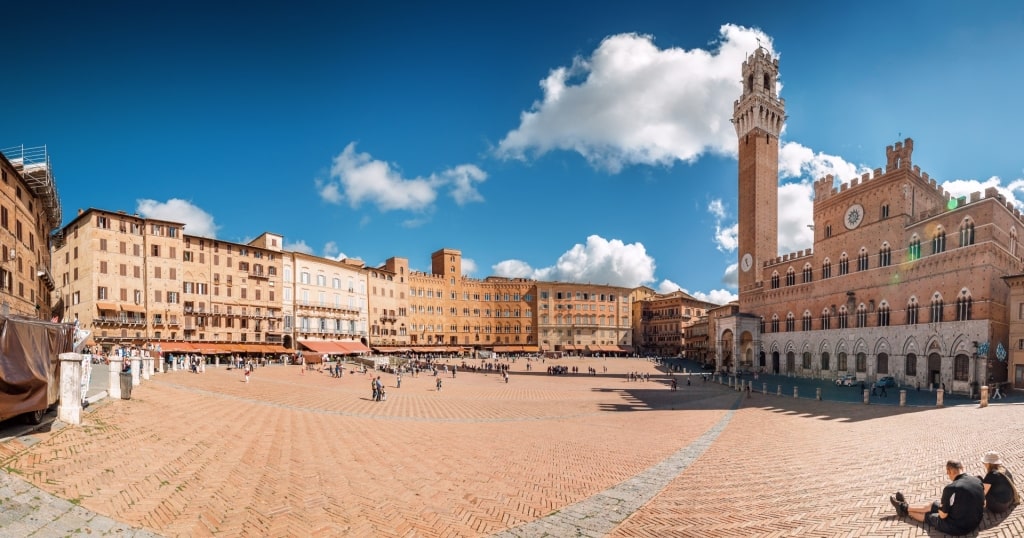
Piazza del Campo
One of the most unique piazzas in all of Italy, the Piazza del Campo, or “Il Campo” is the center of life in Siena. Its unusual fishtail shape and slanting red brick surface is the location of all of Siena’s major events, including the twice-annual Palio horse race.
It’s also the civic headquarters of the city. This purpose is emphasized in the piazza’s design, with the brick floor separated into nine wedges, outlined in travertine, that point towards the 13th century Palazzo Pubblico and its attached Torre del Mangia tower. The nine segments represent the Council of Nine that helped steer the Republic of Siena through its golden age.
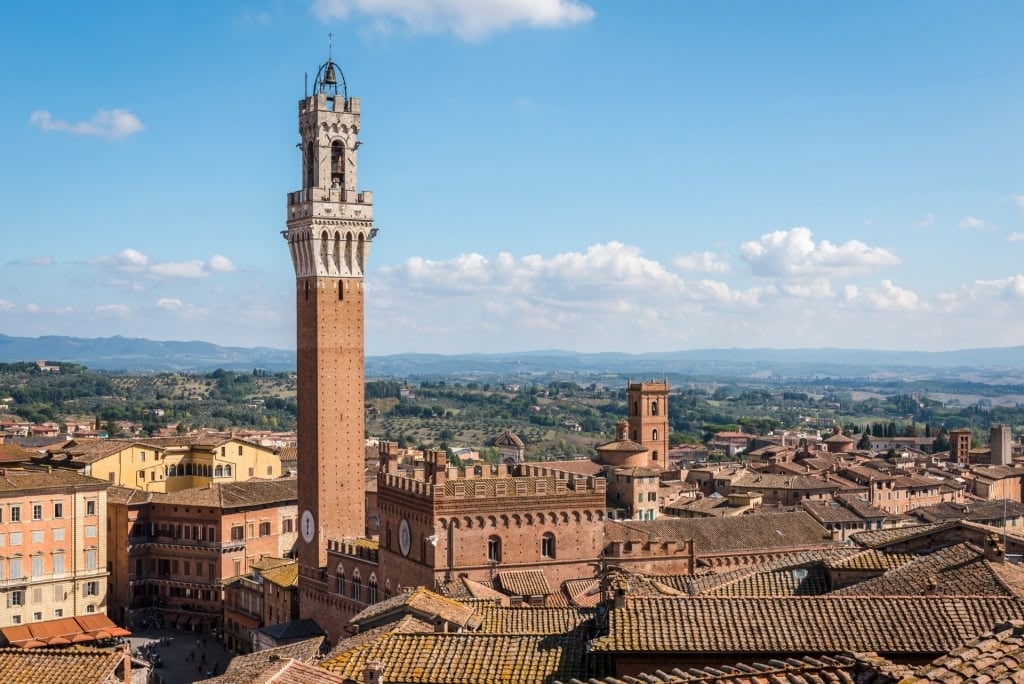
Torre del Mangia
It’s possible to hike up the 300 steps of the tower, the third tallest of its kind in the country, for panoramic views over the maze of streets and the rolling countryside.
Or you could weigh up the pros and cons of hiking all those steps while sipping a spritz beneath the umbrellas of one of the restaurants or bars lining the piazza. Il Bandierino is the most popular, for good reason.
Be sure to toss a coin into the marble Fonte Gaia, a 19th-century replica of the original which is preserved in the Santa Maria Della Scala museum. Afterwards, stroll to the Orto de’ Pecci park for a swatch of the Tuscan countryside within Siena’s ancient walls.
Step Inside the Incredible Duomo di Siena
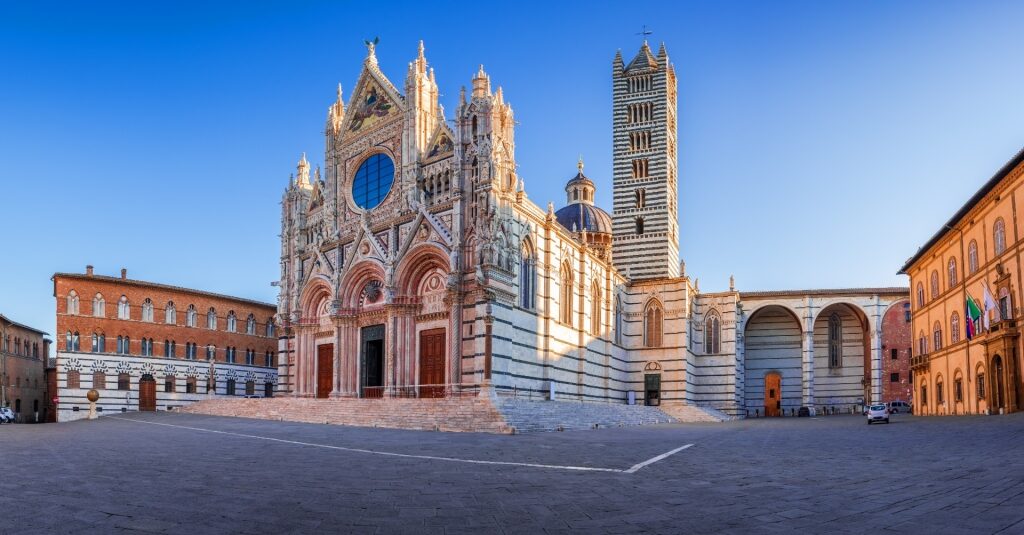
Duomo di Siena
An extraordinary marble edifice lodged into the brick weft of Siena, the gothic Duomo di Siena is one of the country’s most memorable cathedrals.
The striped exterior is stunning, however, it looks almost demure compared to what awaits inside. Echoing Siena’s light and dark coat of arms, the cathedral’s interior is a striped overload of marble and gilt. The inlaid floor is one of Italy’s most ornate, mirroring the maximal ornamentation of the celestial vaulted ceiling.
Artistic masterpieces line the walls. Admire the pulpit by Nicola Pisano, Donatello’s bronze The Feast of Herod, and a statue of Saint Paul by Michelangelo. Also look for the flag poles that were a key part of the Sienese beating the Florentines at the famous Battle of Montaperti in 1260.

Piccolomini Library
As if there weren’t enough style and bombast already, you’ll also find the Piccolomini Library inside. Dedicated to Pope Pius II, the library entrance is a portal into another artistic era, as you step from gothic grandeur and into the library’s luminous Renaissance frescoes.
Read: Best Things to Do in Tuscany
Discover Siena’s Artistic Heritage
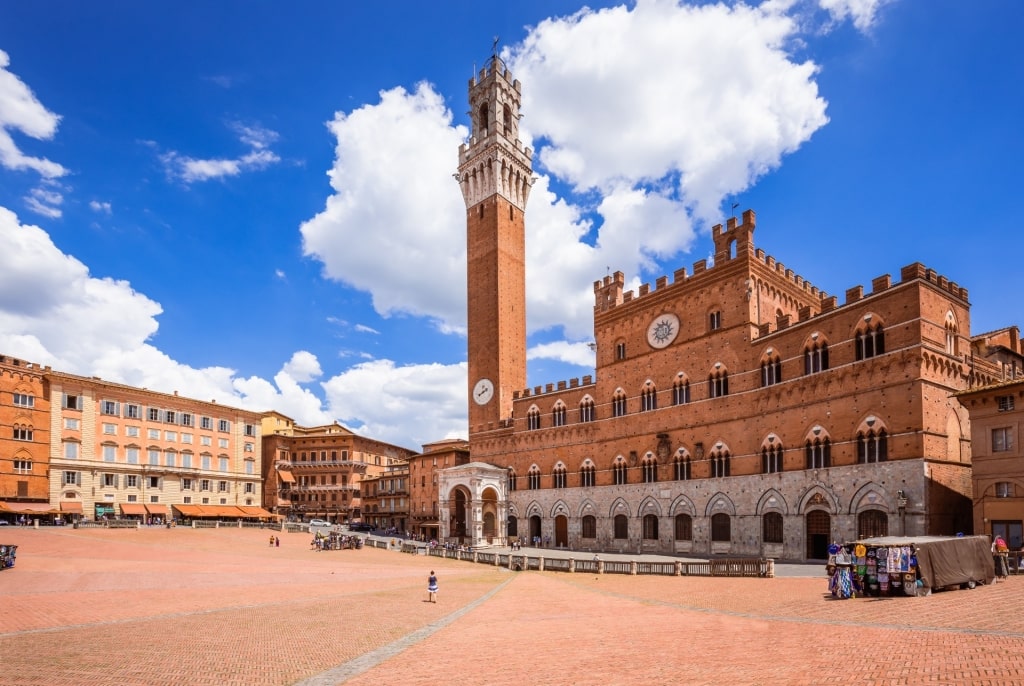
Palazzo Pubblico
While in Il Campo, take time to explore the Museo Civico, located in the stately Palazzo Pubblico.
The museum is, in large part, a shrine to how Siena managed to quell the infighting among its powerful families. This stable rule was achieved through its Council of the Nine—nine members of the city’s merchant class that were elected to the council. The entire council was replaced every two months and the members chosen by lottery.
The museum is home to wonderful frescos that depict aspects of medieval life and reinforce the practices of good government that the Nine employed.
A superb companion to the Museo Civico is the much larger Pinacoteca Nazionale di Siena. The city’s main art museum, it has a wealth of Sienese school artworks spread over two palazzi in the city center.
See the Relics of Saint Catherine of Siena
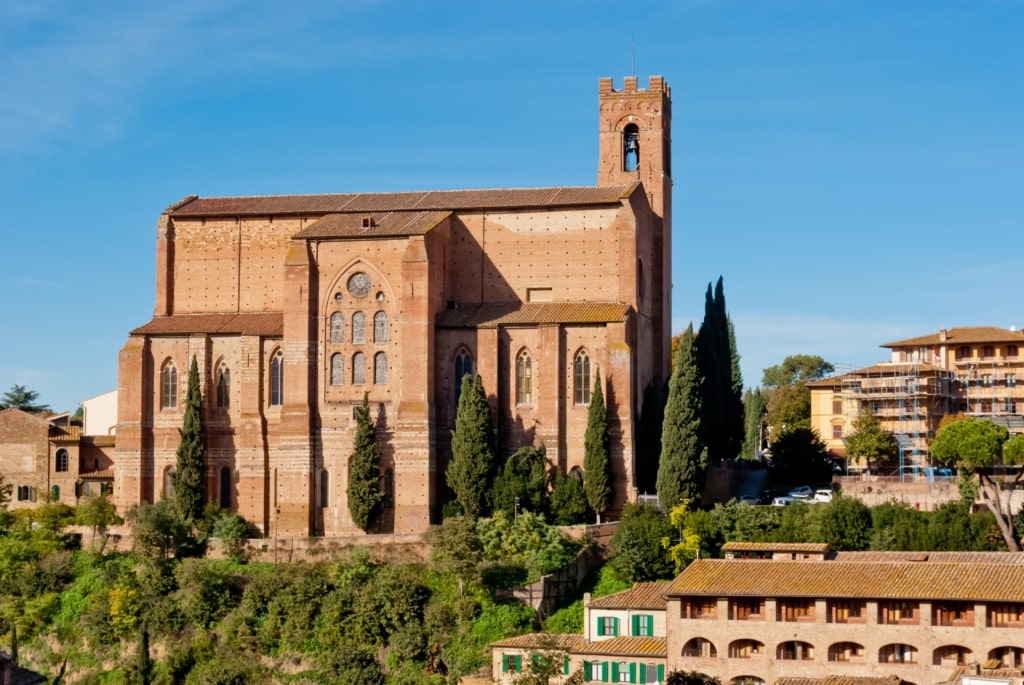
Basilica of San Domenico
The Basilica of San Domenico is a sober-looking hulk of brick that dominates Siena’s Fontebranda district. It’s long been a pilgrimage destination for those seeking to worship Saint Catherine of Siena, who was canonized for her unyielding piety and miracle-working.
What makes a visit to the basilica so unique is the nature of the relics that can be found within. The saint’s mummified head is on display in a grand, marble-pillared reliquary, with her disembodied thumb close by. The rest of her remains are shared between Rome and Venice. It’s yet another example of how the medieval feels truly tangible in Siena.
Food & Drink
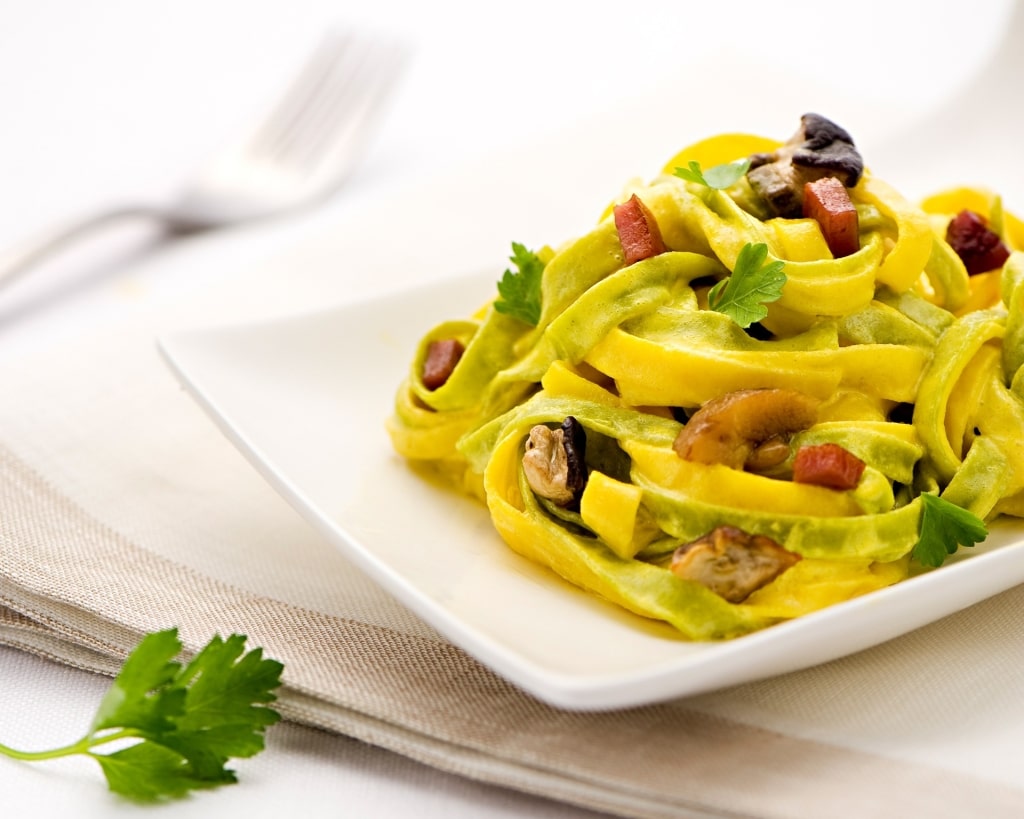
Paglia e fieno
As Siena is situated in the heart of Tuscany, its cuisine is decidedly Tuscan, with all the warming bowls of ribollita, pici all’aglione, and potato tortelli you can wash down with your bottle of cherry-forward Chianti Riserva. However, there are specific Sienese specialties that you should seek out.
While the rustic pici noodle—a pencil-thick version of spaghetti—is the predominant pasta of Tuscany, the Sienese are happy to employ other formats, as best discovered beneath the cellar ceiling of La Taverna di San Giuseppe.
With the traditional pasta dish of paglia e fieno, for example, this is usually made with two versions of the tagliatelle—green spinach noodles to indicate the hay and the usual plain ones for the straw. While the name “hay and straw” sounds very rustic, the sauce is anything but: a mix of prosciutto, peas, onions, and heavy cream.
A lighter local treat available on bar menus or in restaurants such as the excellent Osteria Permalico is acciughe sotto pesto. Essentially a plateful of silvery anchovies swimming in a spicy, garlicky oil, they’re highly addictive. If the tiny fish so beloved of the Italians is a little too punchy on their own, feel free to add them as a topping to some lightly toasted bread.
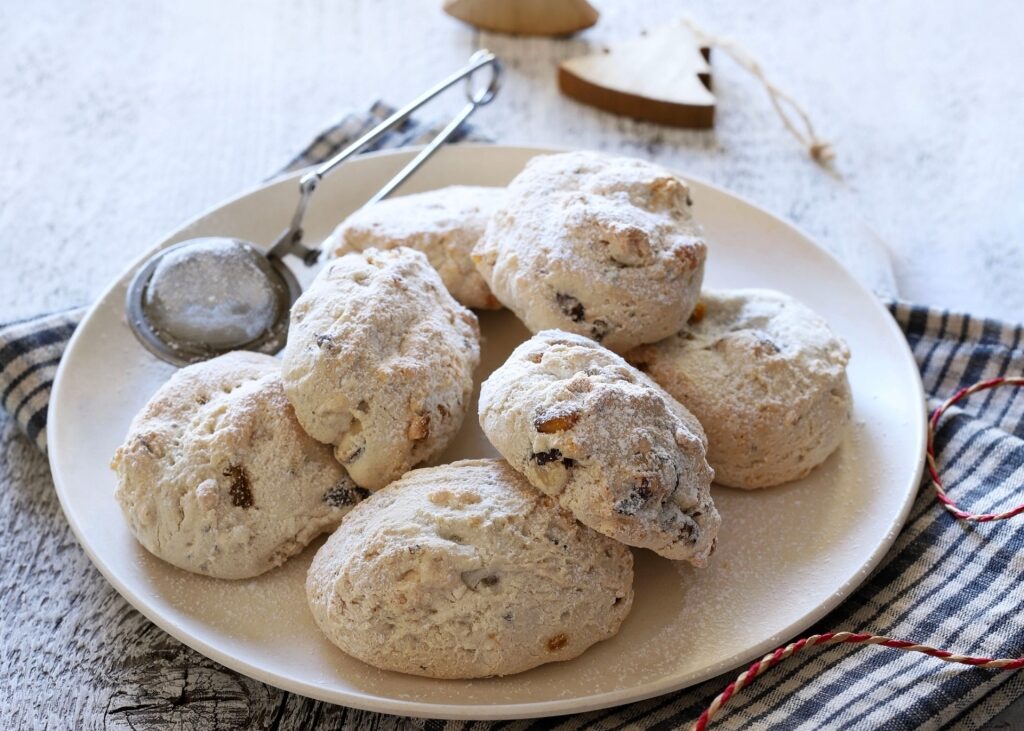
Cavallucci
The nonnas of Siena also seem to have been major biscuit addicts. Cavallucci, a traditional Christmas biscuit made with anise and candied fruits, hails from the city. Less well known are berriquocoli—essentially a larger, richer version of cavallucci that contain walnuts and floral candied cedar. They’re also called cavallucci dei signori, or “cavallucci of the nobility.”
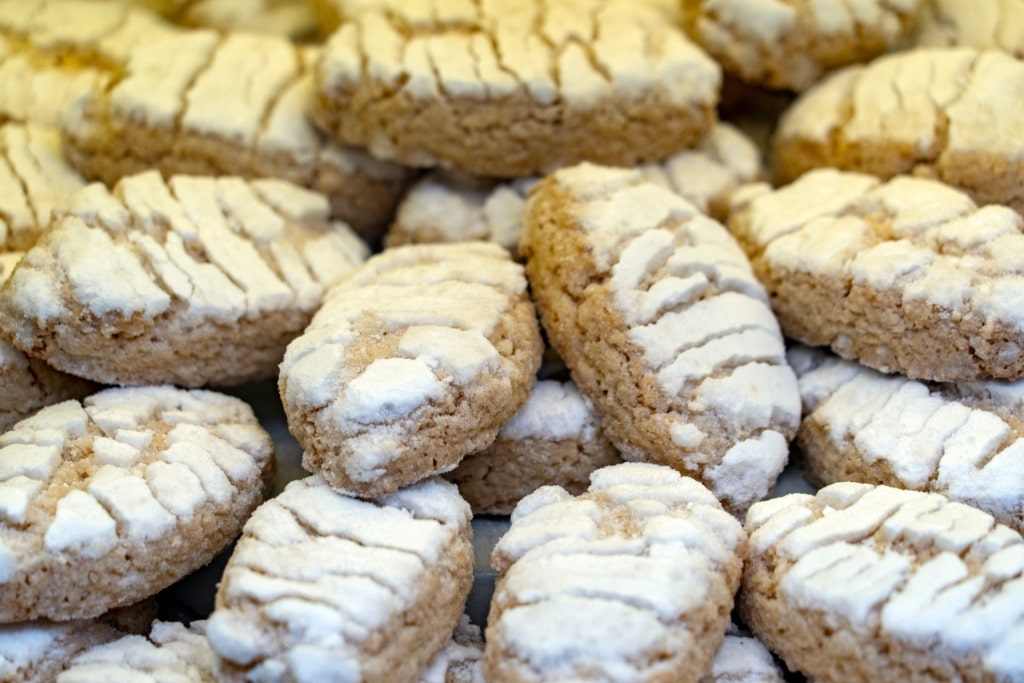
Ricciarelli di Siena
Finally, a biscuit that often comes as a dessert is ricciarelli di Siena. While the name gives all the credit to Siena, these sugared marzipan ovals were introduced to the city by a nobleman returning from the Crusades.
With expensive marzipan the preserve of the upper classes, for centuries these biscuits would only be found on the tables of Sienese nobility. Pick up some premium ricciarelli at family-run pastry shop, La Pasticceria Buti.
Best Time to Visit
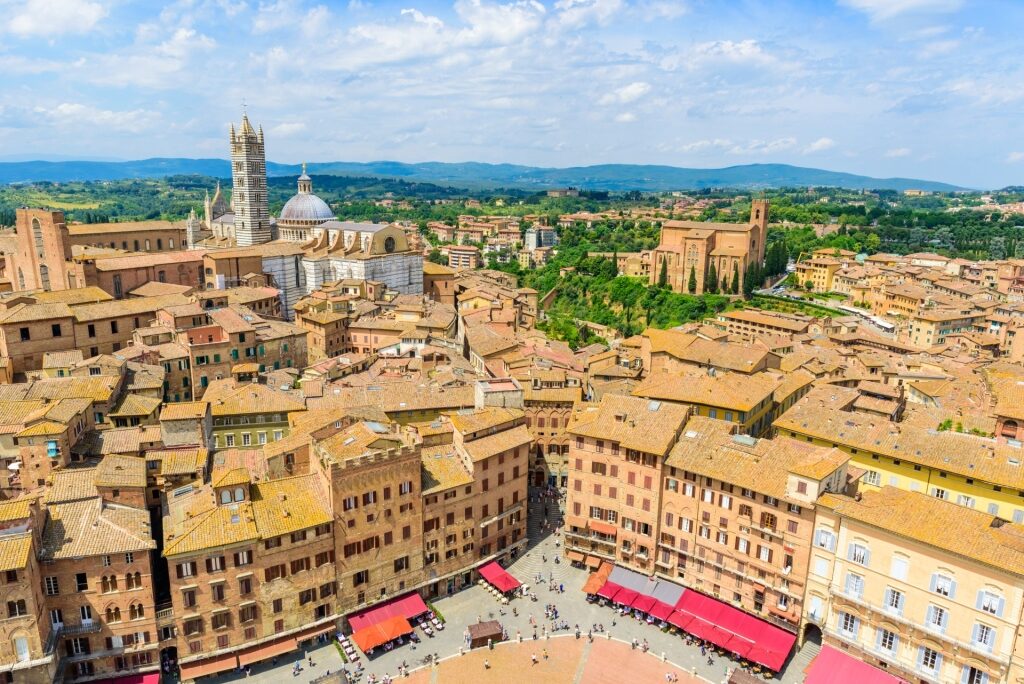
Piazza del Campo
The best times to visit Siena—and Italy in general—are late spring and early fall. At this time, you have glorious daytime temperatures, plenty of sun, and, for a headline destination like this Tuscan city, reduced crowds.
During spring in Italy, the tiny urban gardens of the city overflow with blooms. By May, there are steady daily averages of 65.1°F (18.4°C) and the bars and restaurants of the steeper streets deploy their al fresco tables, the legs carefully shortened to provide a flat surface for your aperitivo and antipasti.
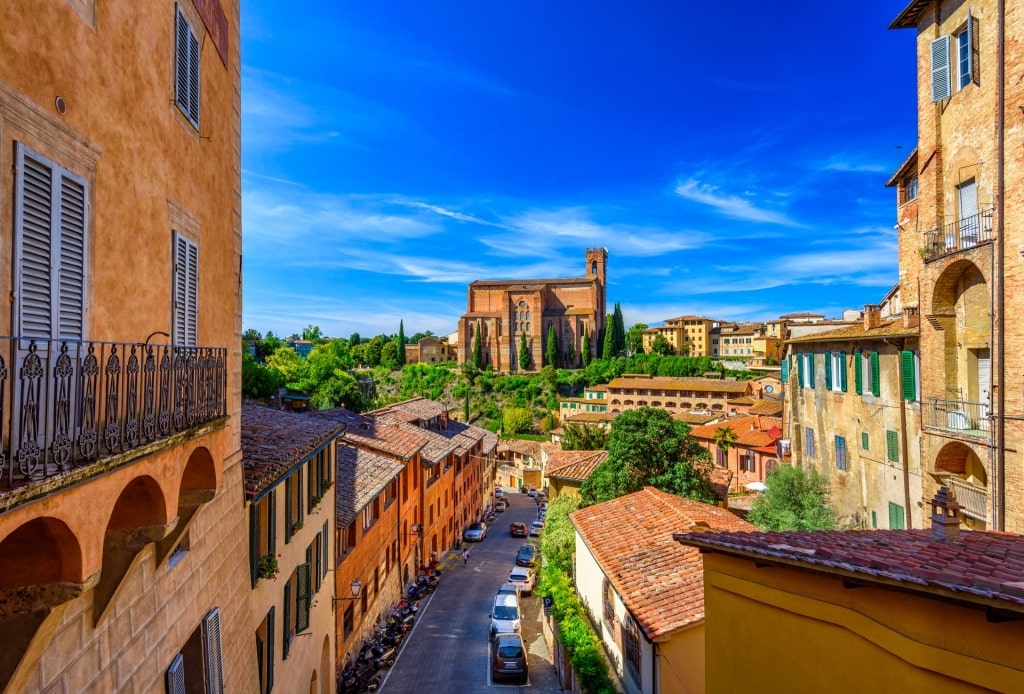
Basilica of San Domenico
Summer in Siena is glorious. The view from the Torre del Mangia is one of rolling countryside glowing green beneath the high Mediterranean sun. However, in the warmest months of July and August, the temperatures in the narrow streets can climb to highs of 91°F (32.6°C), with a more forgiving daily average of 78.1°F (26.5°C).
Travel in the autumn and you arrive during the harvest season and the period of the vendemmia grape harvest. You’ll taste delicious pici tossed with freshly foraged mushrooms and paired with the latest vintages while enjoying daily September averages of 79°F (26°C).
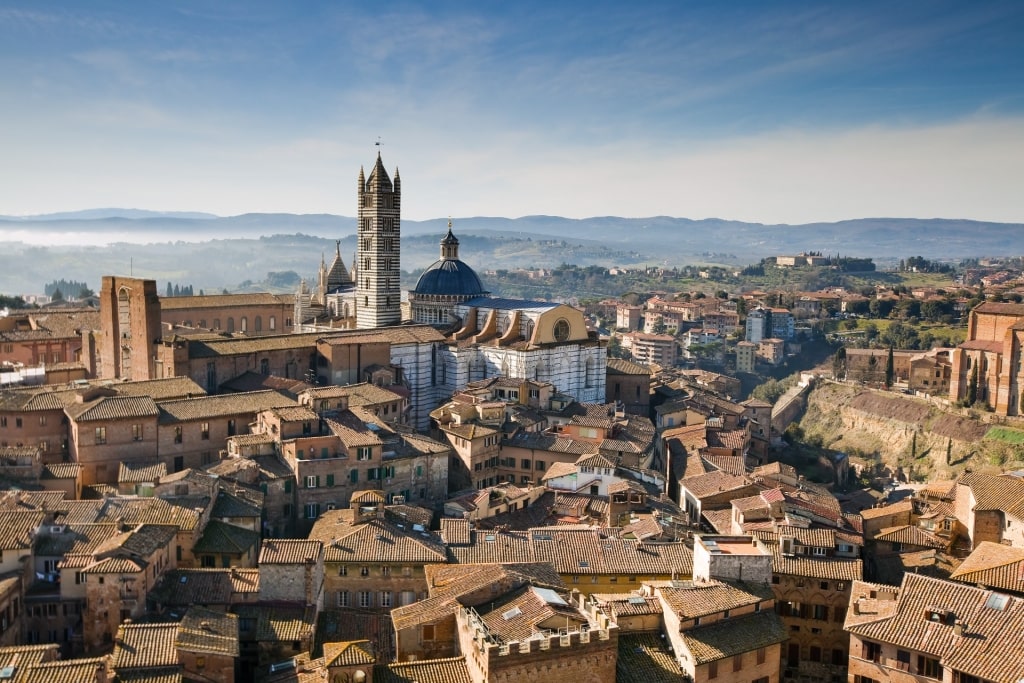
Siena
Explore Siena’s immense art, culture, and culinary heritage on a cruise to Italy with Celebrity. Browse our cruises to Tuscany and book a thrilling cruise vacation to this stunning country today.
